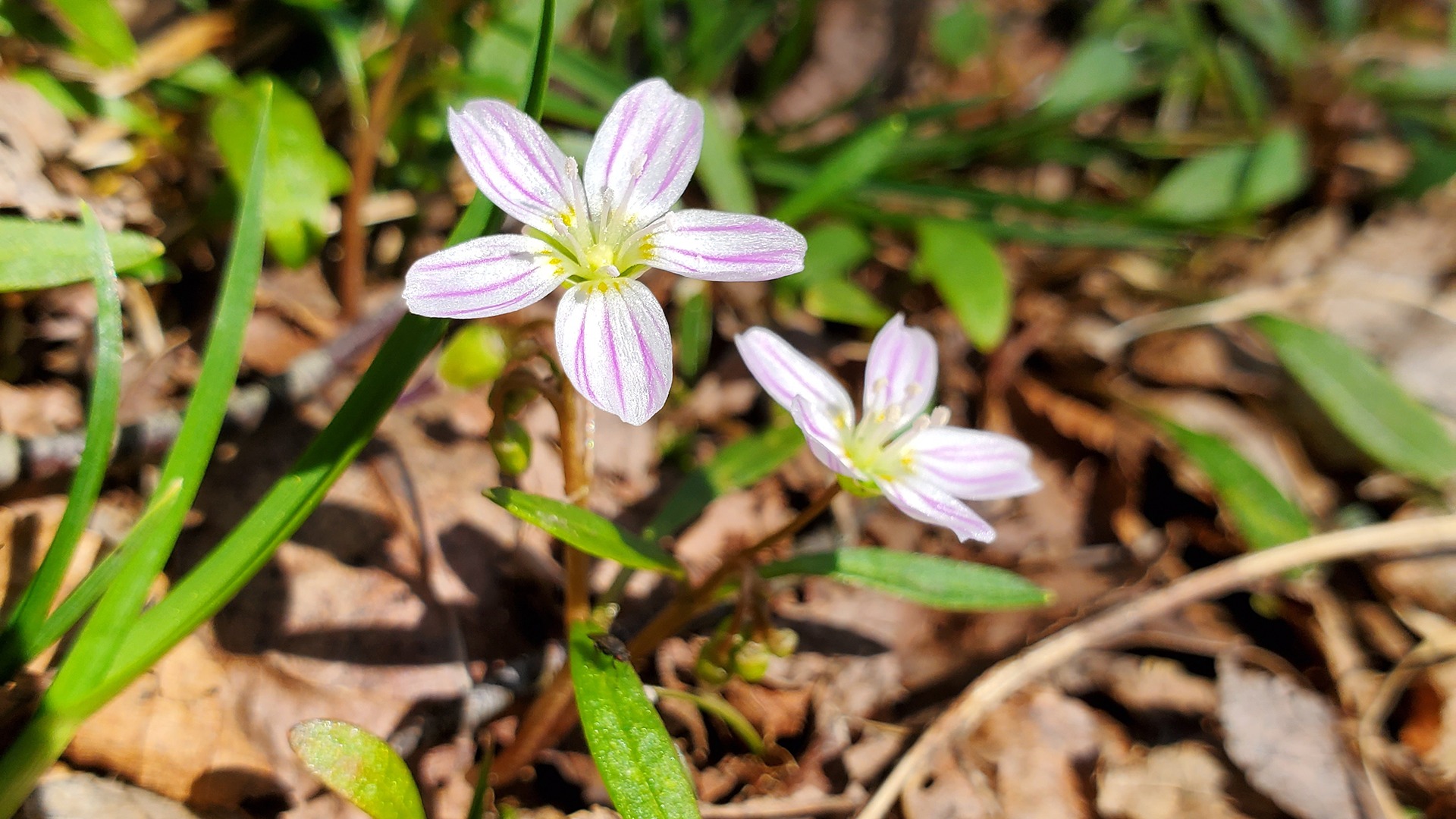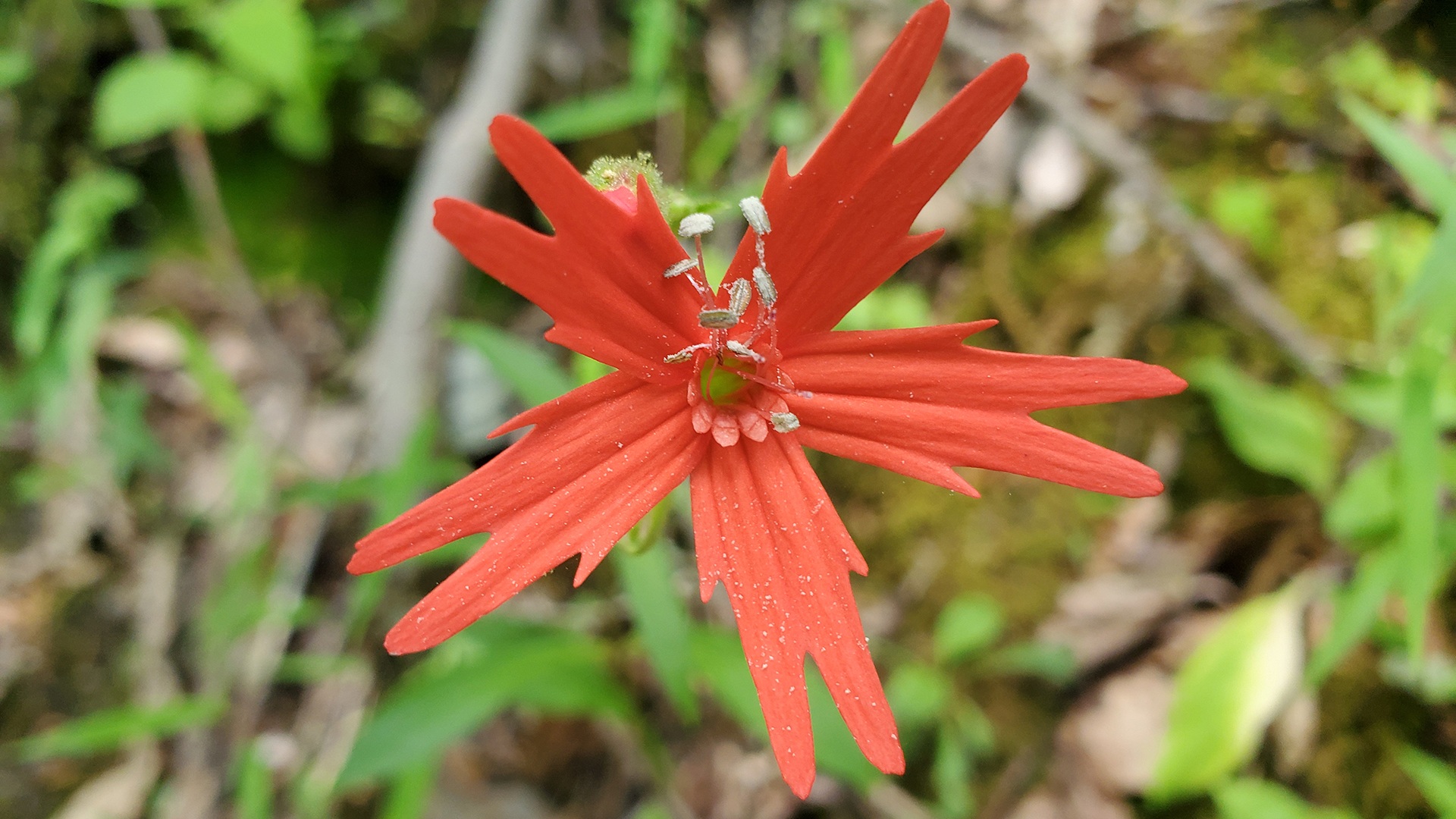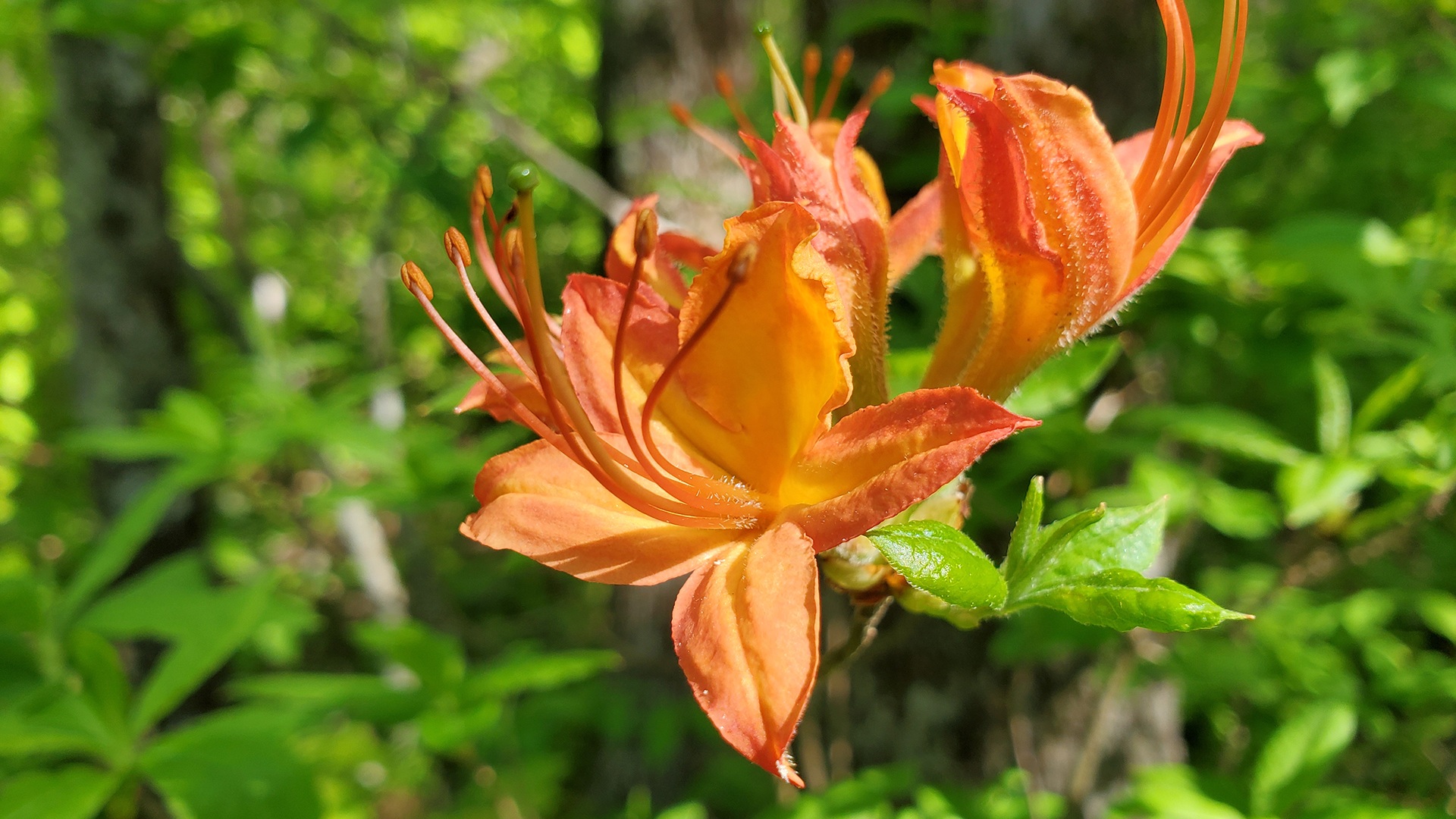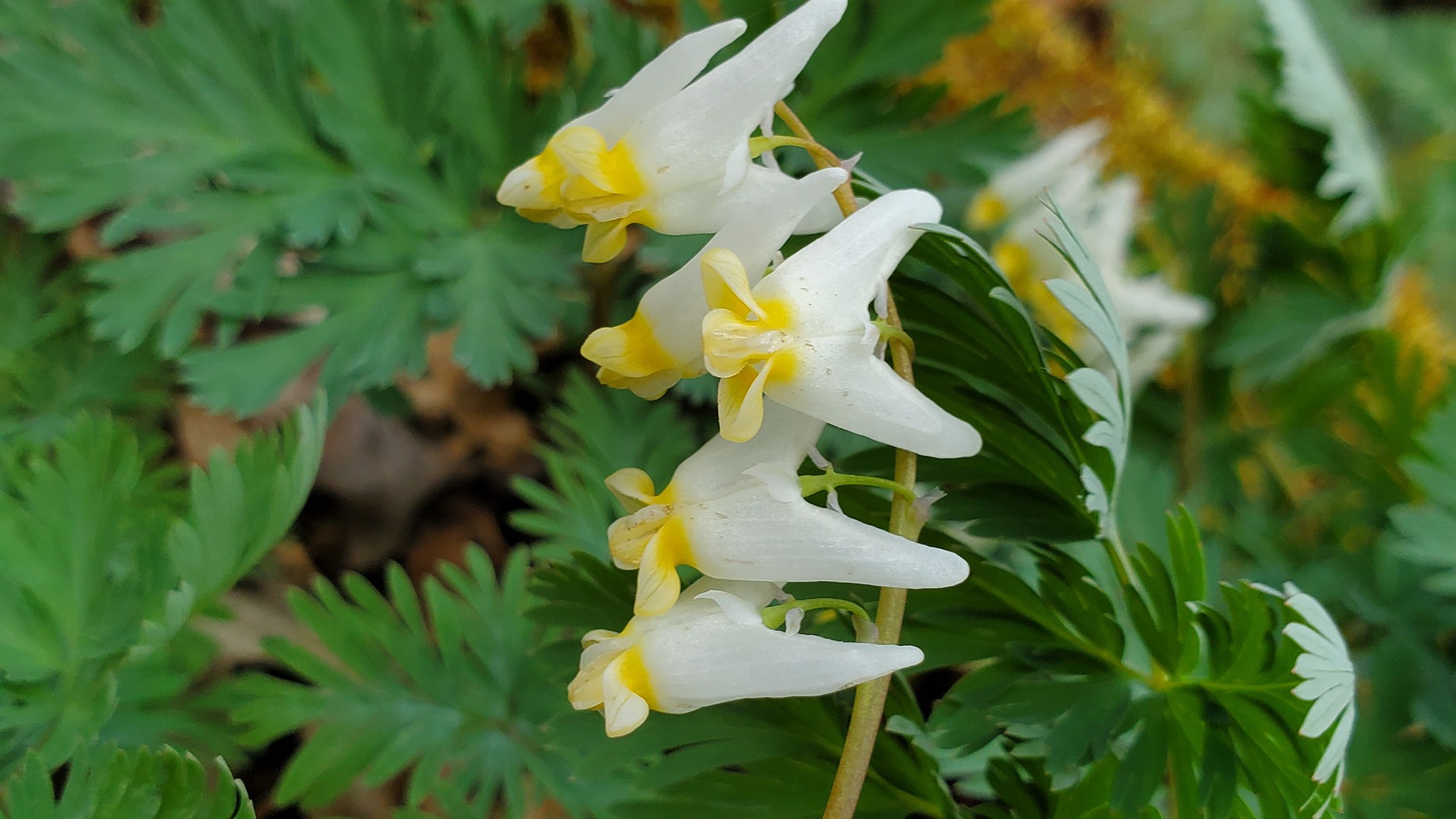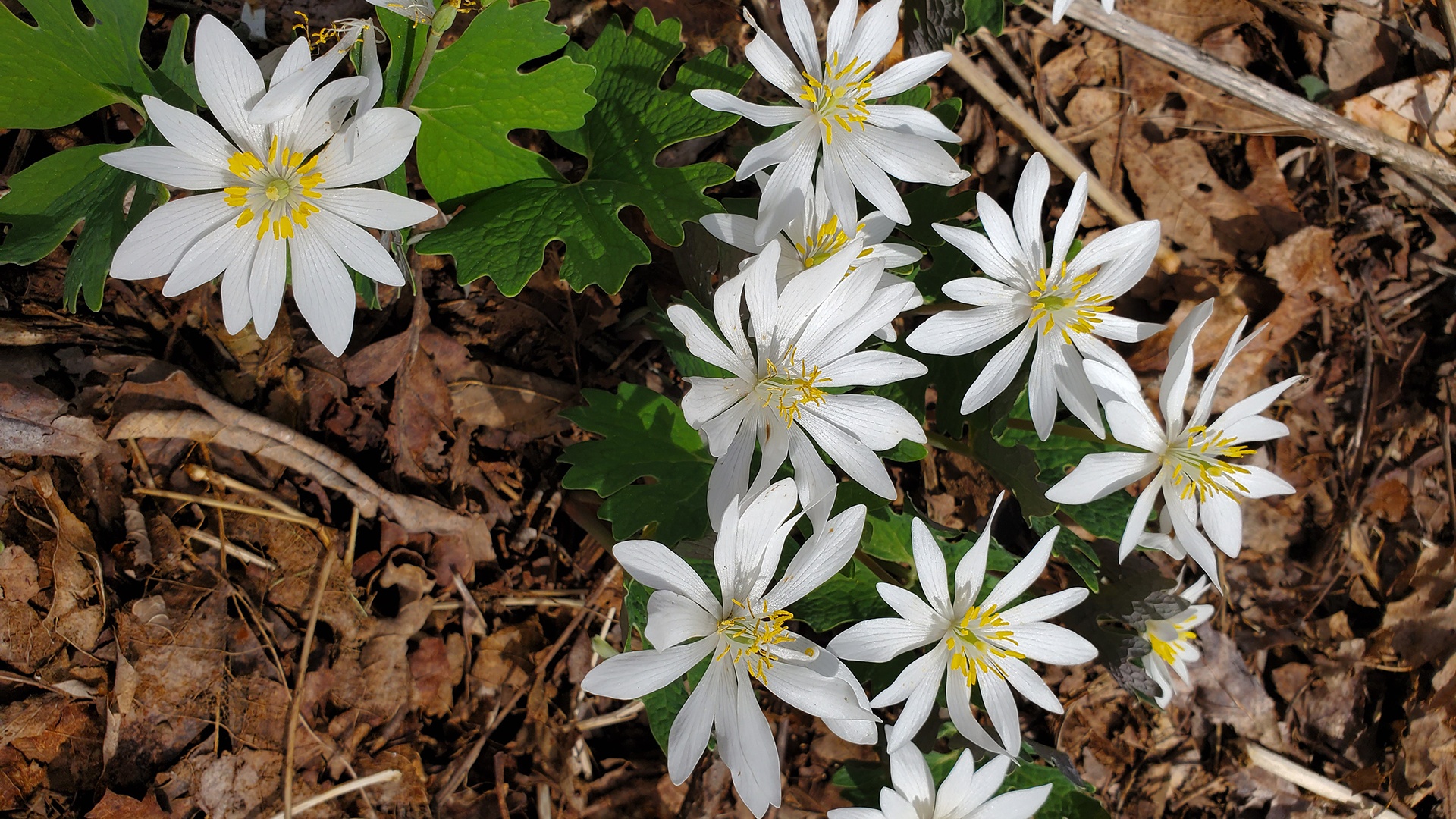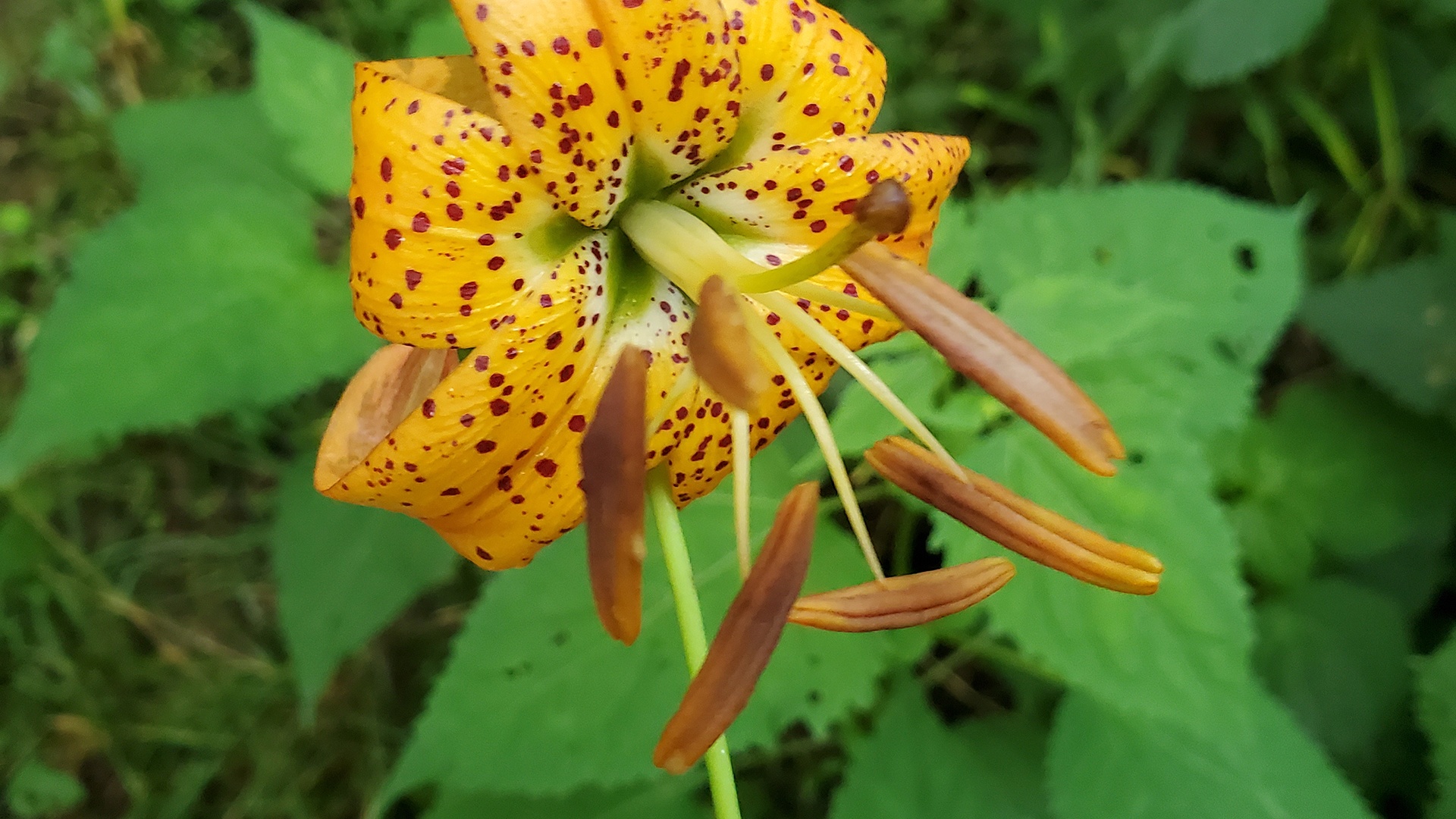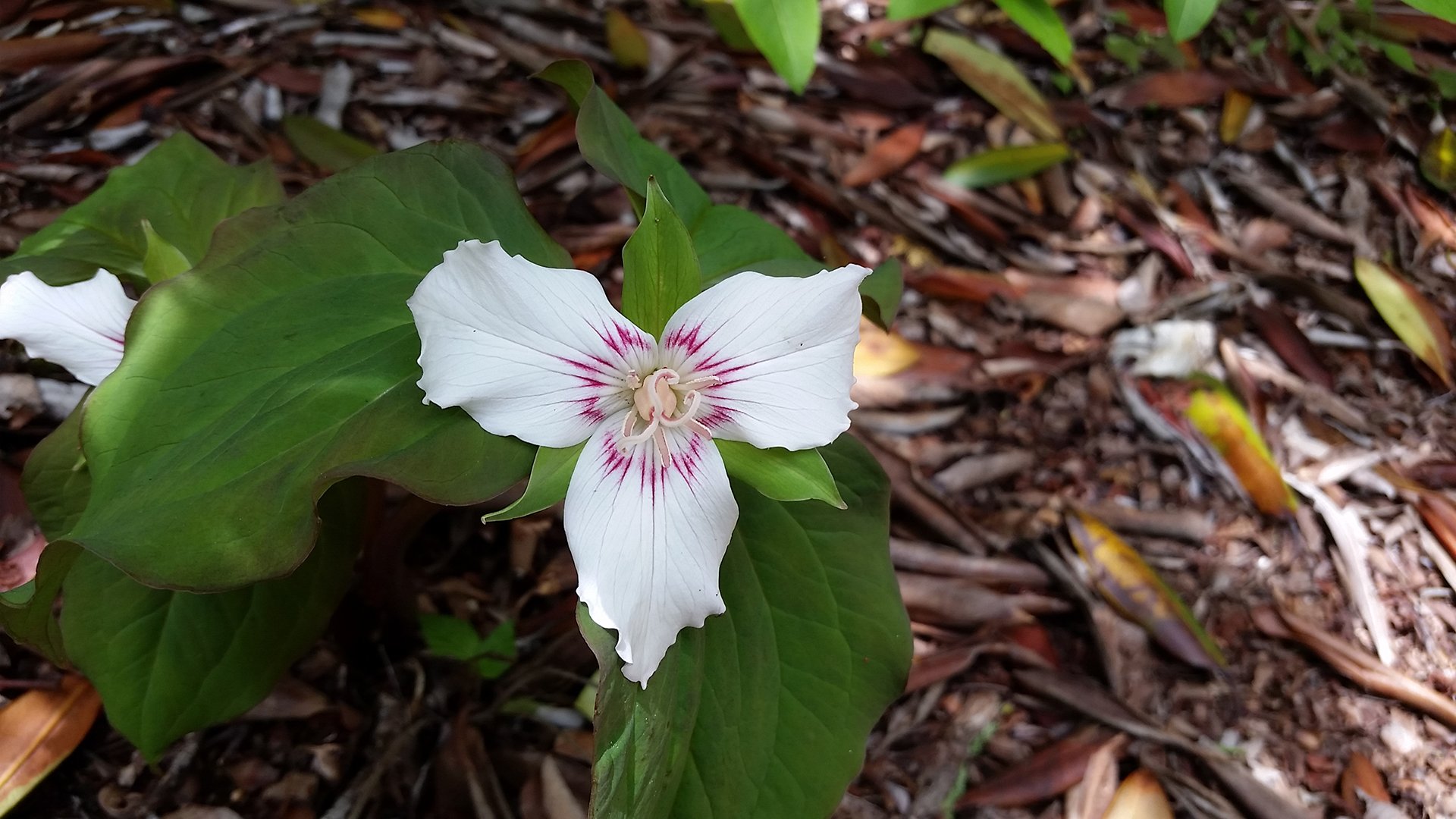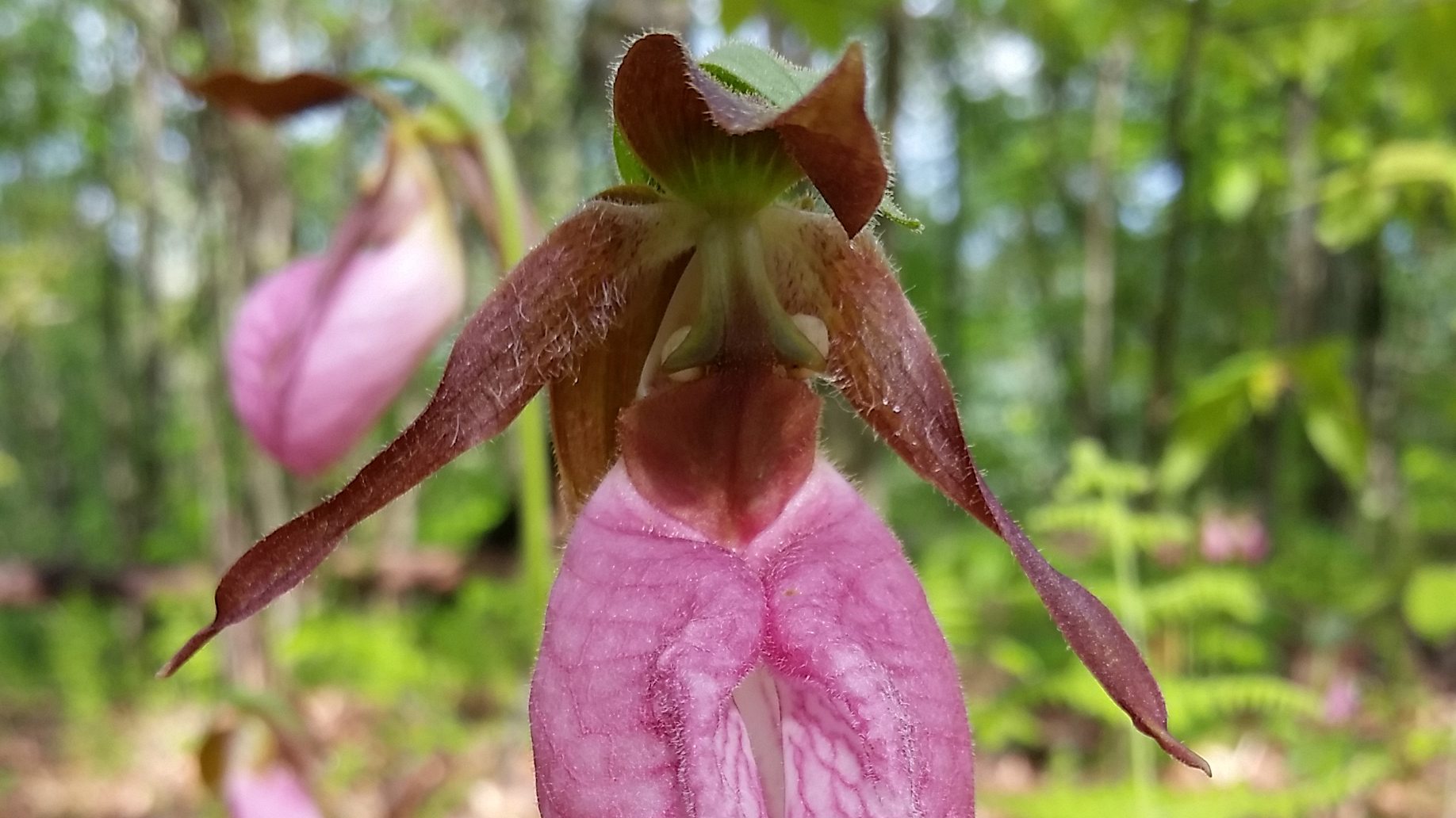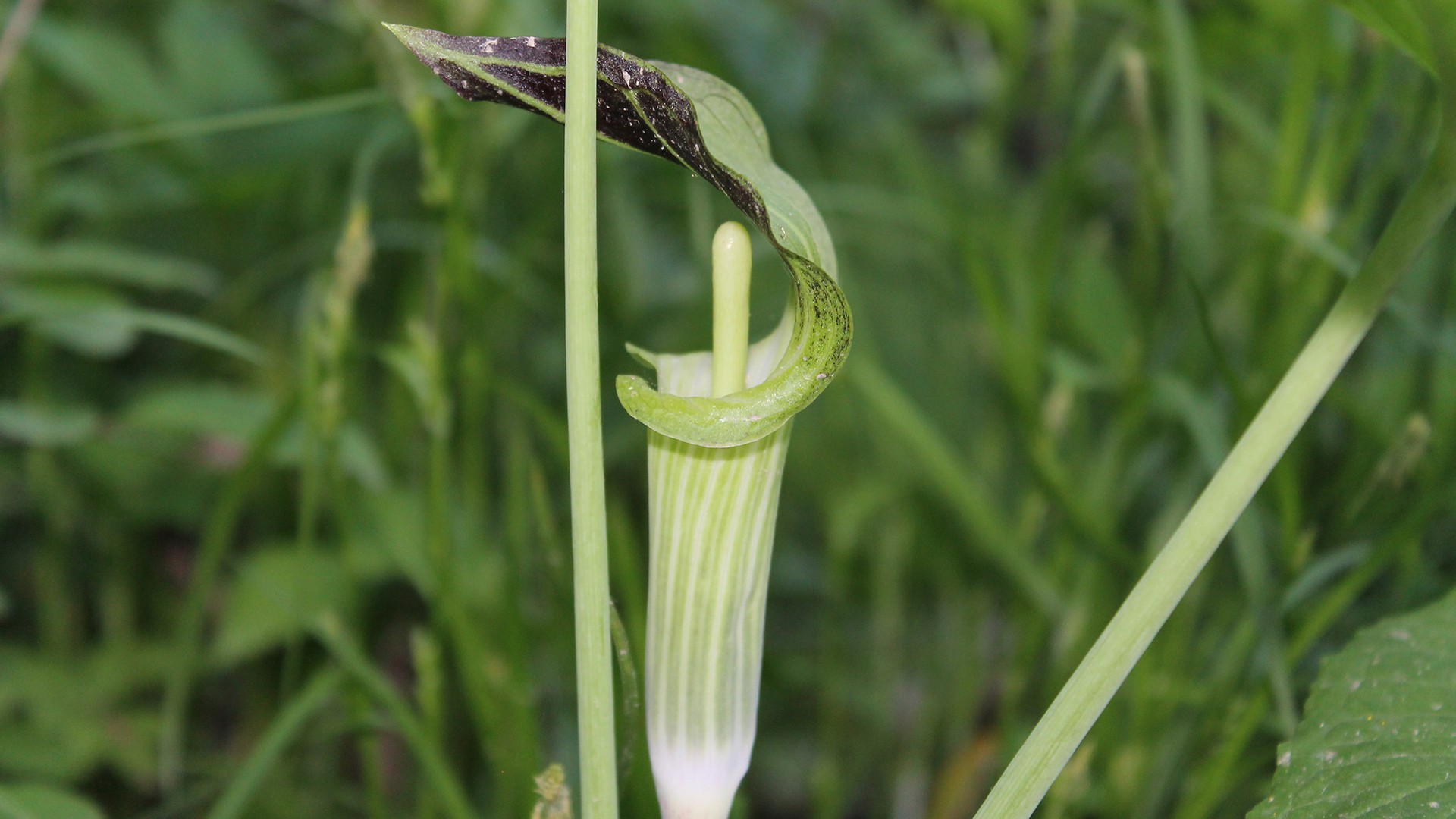Appalachian Trail Wildflowers
April 29, 2020
Spring is here and warmer days are finally upon us, meaning ephemeral spring wildflowers will be sprouting out of the ground to show their gorgeous array of colors. Here are ten wildflowers you might encounter on the Appalachian Trail (A.T.).
Spring Beauty
Blooming in February and March, the Spring Beauty is among the first wildflowers you will see on the Trail. A perennial herb, these small flowers are an average of 6 inches tall with five petals, whose color ranges between white and pink coloration. They are commonly found in mesic (moderate moisture) forests throughout most of the eastern U.S. They are a favorite snack of deer, elk and sheep, and are considered a wild edible. It’s best to not pick them as this wildflower is endangered in some states along the A.T. like Massachusetts. Other common names for the Spring Beauty include Good Morning Spring or Fairy Spuds.
Fire Pink
This wildflower’s deep red coloration is hard to miss. Blooming between April and June, the Fire Pink is a perennial that is roughly 6–24 inches tall with five petals of rich scarlet red. Found in dry open woodland, meadows and rocky slopes from New Jersey to Georgia, the narrow tubes of the Fire Pink make it a favorite nectar plant of hummingbirds.
Flame Azalea
A multi-branched mountain shrub that can grow up to 10 feet tall, the Flame Azalea blooms between April and June. Each flower is 1.5-2 inches wide with brilliant yellow to deep orange coloration. Found in dry open woods from New York to Georgia. It is commonly cultivated as a spectacular ornamental plant.
Dutchman’s Breeches
Found in 37 states, this oddly shaped wildflower turns heads as each bloom resembles the baggy pants worn by Dutchmen hanging upside down on an arching clothesline. A perennial herbaceous plant, it blooms between April and May with mainly white coloration and a height of 12 inches tall. Other names for Dutchman’s Breeches include Little Blue Staggers and Bleeding Heart.
Blood Root
Roughly 6 inches tall and consisting of a single leaf and flower stalk, each Blood Root grows separately from the ground as they develop. The flower blooms between March and April each year and can grow to be 1-2 inches wide with 8-16 white petals. The name Blood Root is derived from the orange-red sap that oozes from the underground stem (or rhizome) when cut. This wildflower also has historical relevance, as Native Americans would use the sap as body paint. However, the plant can be toxic even in small doses, so don’t get any ideas!
Turk’s Cap Lily
This dramatic wildflower is commonly confused with the Carolina Lily, the official state wildflower of North Carolina. The stalks grow 4-8 feet tall and the flower typically blooms between July and September. The flower is typically an orange, yellow or red coloration and is liberally spotted. Another distinguishing feature of the Turk’s Cap Lily is the intense recurve of the petals. You can distinguish a Turk’s Cap from a Carolina Lily by the green star inside the flower tube. A Carolina Lily has a green circle instead.
Painted Trillium
We could make an entire list of the different types of Trillium you might see in the woods, but we’ll stick with just one for now. The flower grows 2-5 inches wide, with stark white petals and a red V-shaped blaze near the base. It blooms between April and May and can be found from the northeastern U.S. all the way to the mountains of Georgia in cool coniferous forests or acidic woods with scattered laurel, galax and rhododendron. The name is derived from the unique feature of its bi-colored petals.
Pink Lady’s Slipper
This somewhat rare wildflower has a unique shape that makes it easy to identify. It grows 6-18 inches tall, has two dark green leaves at the base, with the distinct pink flower growing off a long, thin stem. They bloom between April and May and can be found in acidic, mixed coniferous, and hardwood forests. The Pink Lady’s Slipper can be found in some of the Midwest and all over the East Coast, like North Carolina and Tennessee. The name is derived from its shape that has a striking similarity to slippers (if you squint).
Mayapple
Usually occurring in large colonies, the Mayapple grows 18 inches tall with umbrella-like leaves that are 8-15 inches wide that are often more distinctive than the flower itself. The solitary flower is white and hangs down. They bloom between April and May, and can be found in moist woods and meadows throughout the entirety of the eastern U.S. Other common names include Maypop, Devil’s Apple, Duck’s Foot and Hog Apple.
Jack-in-the-Pulpit
Peeking out of its pulpit like it’s afraid of public speaking, Jack-in-the-Pulpit consists of a stalk that is 12-36 inches tall with a leaflet growing over and hiding the spadix, or fleshy spike, that is “Jack.” It grows between April and May in rich, moist woods, stream banks throughout most of the eastern U.S.
While the A.T. landscape is brimming with wildflowers, it’s important to make a conscious effort to leave these beautiful plants as you find them. Take a picture with your phone or camera and move along. This will allow these wildflowers to be around for others to enjoy and keep the Trail’s natural beauty as part of the Leave No Trace ethic. As soon as you see people coming up the Trail ahead of you, or hear people coming up behind you, look for a durable surface, such as a flat rock or ground bare of vegetation, and step aside, so you are not inadvertently trampling fragile wildflowers or mosses, which often grow on the Trail’s edge.
Photos courtesy of David Schafer and Carl Goodman

